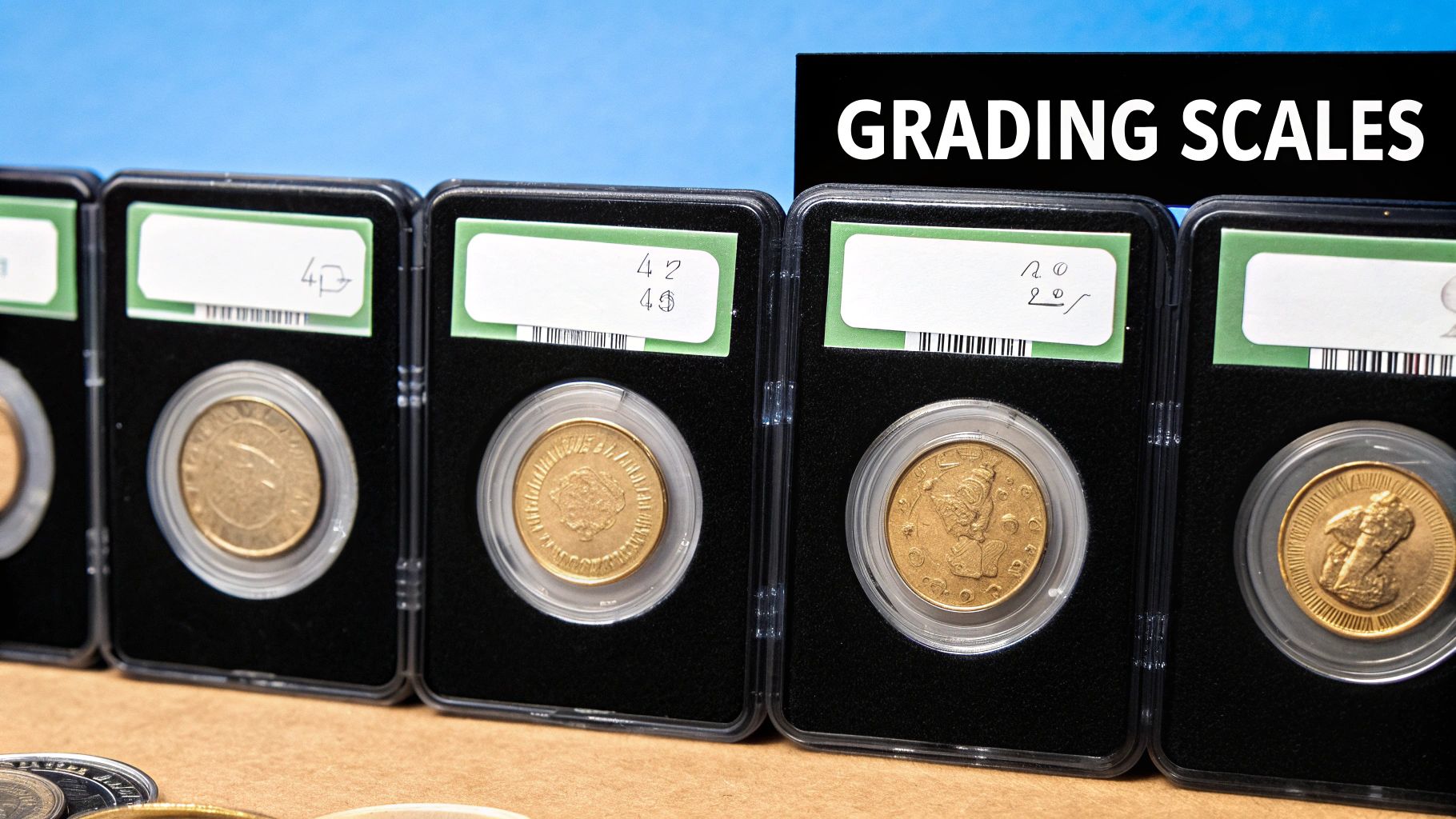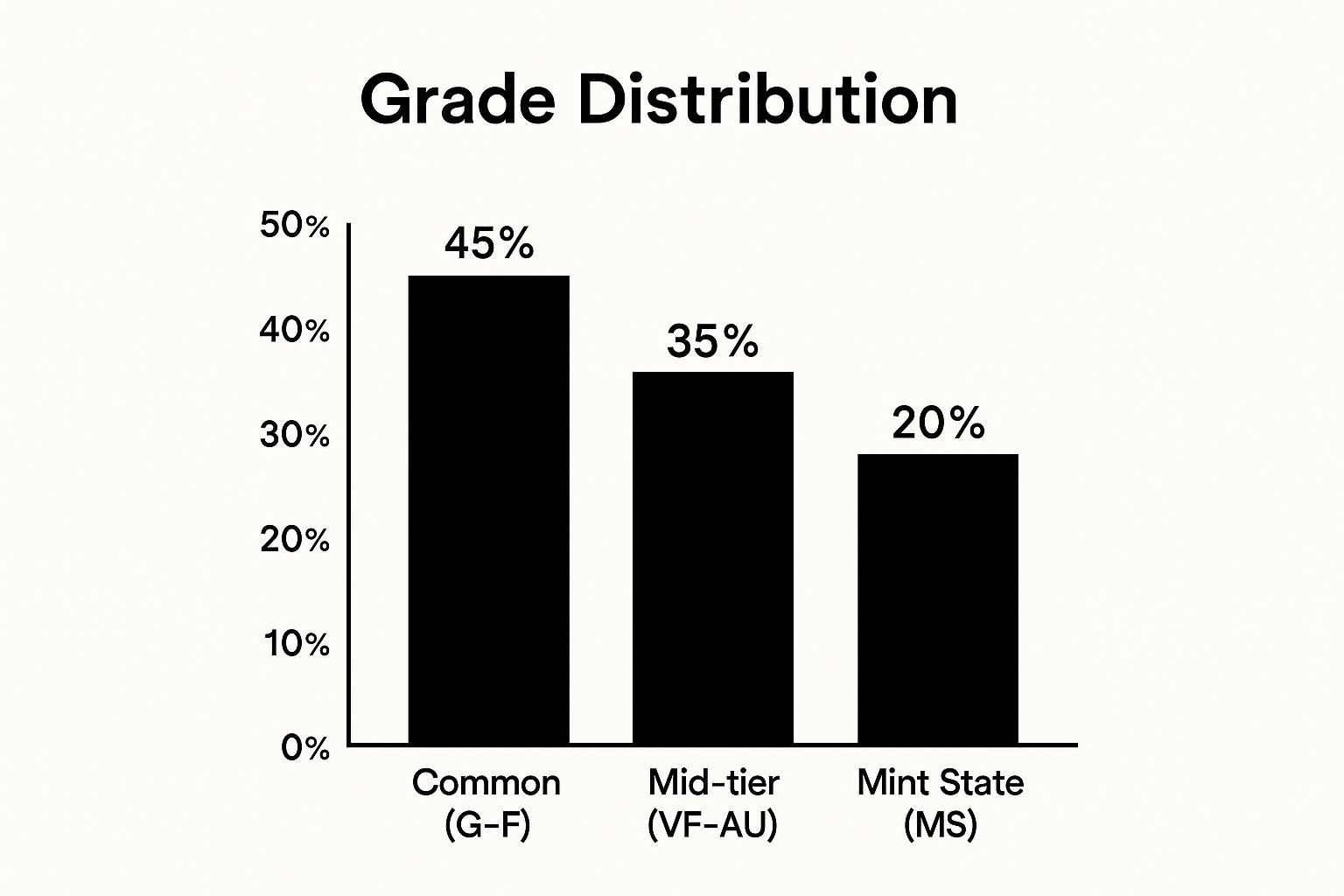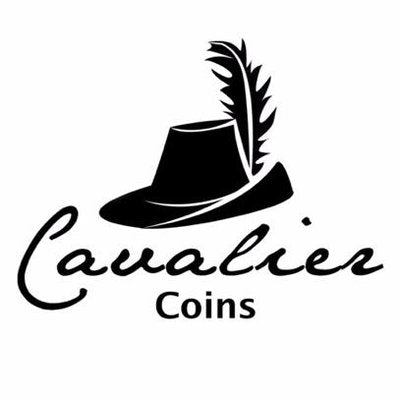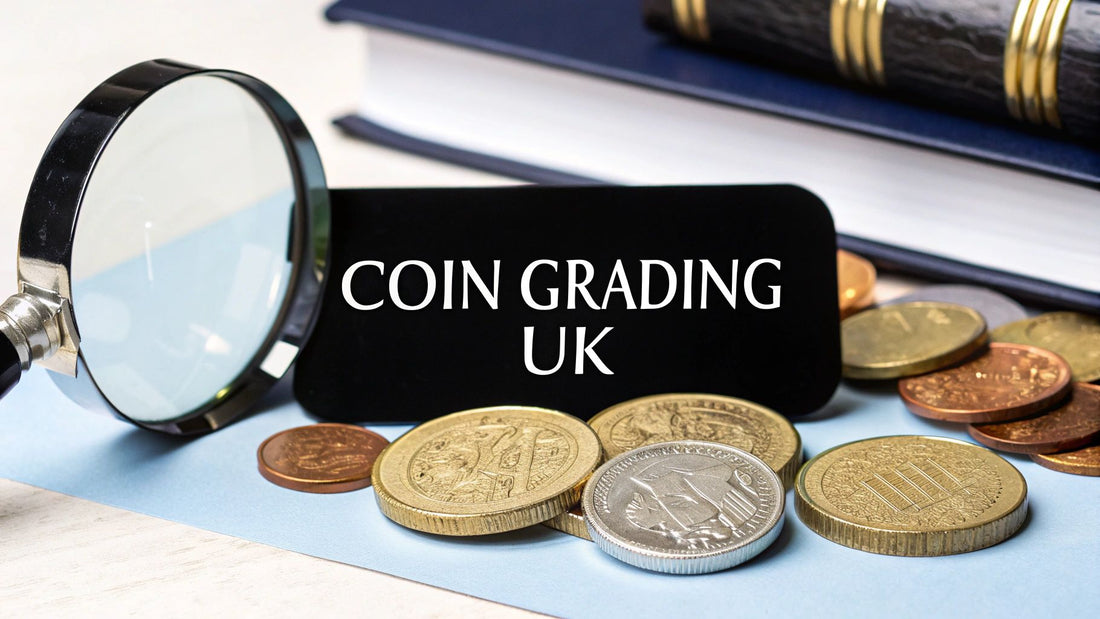The British Approach to Coin Grading

The UK's approach to coin grading has a unique character, rooted in tradition and a nuanced understanding of numismatics. Unlike some international systems, which often rely on numerical scales, the British method historically emphasizes qualitative assessment. This prioritizes the overall aesthetic appeal, considering factors beyond simple wear and tear. Essentially, the “story” a coin tells contributes significantly to its value.
Traditional British Grading Terminology
For generations, British numismatists have used descriptive terms to categorize coin condition. Terms like Fine and Extremely Fine hold significant weight within the UK collecting community. They reflect a deep understanding of how time, circulation, and even storage can affect a coin’s appearance.
This traditional system, however, can be challenging for newcomers due to its subjective nature. New collectors might find our product sitemap helpful in navigating our offerings.
The Evolution of UK Coin Grading
The UK system has evolved to incorporate more precise grading while still respecting its descriptive roots. Historically, terms like 'Very Good', 'Fine', and 'Uncirculated' were the primary classifications, with Uncirculated representing the highest grade for coins that have never been circulated. This contrasts with the US Sheldon grading scale, which uses a numerical system from 1 to 70.
The UK system emphasizes the condition, strike, luster, color, and overall attractiveness of the coin. This provides a more qualitative assessment than the numerical US system. This evolution reflects the market's need for clearer distinctions while preserving the UK's unique approach. Learn more about coin grading from Coincraft.
This doesn't mean abandoning the rich vocabulary that defines British numismatics. Rather, it means integrating greater precision while maintaining the focus on a coin's overall impression. For instance, a coin could be described as "Extremely Fine with slight toning," noting both its high grade and a unique characteristic.
The Impact on Valuation
This distinctly British approach significantly impacts valuation. While numerical grades offer a seemingly objective measure, the UK's qualitative assessment allows for a more holistic perspective. Understanding the subtleties of British grading terminology is crucial for navigating the UK coin market.
Recognizing the nuances within each grade and how they influence a coin’s desirability and price is essential for both buyers and sellers. This understanding ensures fair valuations and informed transactions within the UK's vibrant numismatic scene.
How British Coinage Evolution Shapes Grading Standards

The history of British coinage is a captivating story of changing monarchs, economic fluctuations, and technological progress. These historical shifts significantly influence how coins are graded in the UK today. Understanding this evolution is essential for any serious collector.
For example, the transition from hammered coins to milled coins brought new complexities to grading. The precision of machine-made coins allowed for finer distinctions in quality.
This meant that factors like strike sharpness and surface preservation became key grading criteria.
The Impact of Metal Composition
The materials used to make British coins have changed drastically over time. These changes in metal composition directly affect how coins are evaluated. The decreasing silver content in British coins, for instance, requires a different grading approach compared to older, silver-rich coins.
Coin grading in the UK is inextricably linked to these historical changes. In 1920, the silver content was reduced from 92.5% to 50%. Then, in 1947, silver was eliminated entirely, except for Maundy coins. This move towards base metals influenced grading criteria, as factors like tarnishing and wear became more important.
The UK's shift to decimalization in 1971 further altered the coinage system. This introduced new coins and required updated grading standards. Explore this topic further. This continuous evolution highlights the UK grading system's adaptability and importance in the world of numismatics.
Decimalization: A Turning Point
The 1971 decimalization of British currency was a pivotal moment in coin grading. The arrival of new denominations, such as the five pence and ten pence pieces, necessitated entirely new grading standards.
This added another layer of complexity to the grading process. Collectors now needed to distinguish between pre-decimal and decimal coins. This differentiation often demands specialized knowledge and careful attention to detail. Understanding the nuances of legal frameworks can also be valuable. A well-drafted founder's agreement template provides clarity on roles and responsibilities, though it may not directly apply to coin grading.
Recognizing Manufacturing Techniques
Different manufacturing techniques throughout British history have left their unique imprints on coins, affecting their appearance and, therefore, their grades. Hammered coins, for example, display different characteristics than milled coins. Recognizing these characteristics is crucial for accurate grade assessment.
Hammered coins frequently have irregular shapes and uneven strikes. Milled coins, on the other hand, are more uniform and precisely struck. This difference means a "Fine" hammered coin might look significantly different from a "Fine" milled coin.
Navigating Professional Coin Grading Services in Britain

For UK coin collectors, choosing the right grading service is a significant decision. It directly impacts a collection's value and marketability. Let's explore the landscape of coin grading services available to collectors in Britain.
UK vs. International Grading Services
Collectors in the UK can choose between domestic and international grading services. Each offers its own set of advantages. UK-based services often possess a deeper understanding of British coinage and terminology.
However, internationally recognized services like PCGS (Professional Coin Grading Service) and NGC (Numismatic Guaranty Corporation) may offer broader market recognition. This is particularly important for collectors aiming to sell internationally. A coin graded by a UK service might command a premium within Britain, while a PCGS or NGC graded coin could be more readily traded globally.
Understanding Service Reputation and Costs
The reputation of a grading service holds considerable weight among dealers and serious collectors. Coins graded by respected services are generally more trusted and achieve higher prices. For more guidance on navigating coin grading, check out this helpful resource: Navigating Coin Grading.
Grading costs can vary significantly. Factor these costs into your budget and weigh them against the potential increase in value the grading might provide.
The Rise of Slabbed Coins in the UK
Traditionally, the UK coin market has been less enthusiastic about slabbed coins (coins encased in protective holders after grading) than other markets. However, slabbed coins are steadily gaining acceptance in Britain. This is due to the added confidence and security that certification provides, especially for valuable coins and rarities.
When Professional Grading Makes Sense
Professional coin grading is an investment. It’s crucial to understand when it yields the best return. For high-value coins, especially rare British pieces, professional grading is often a worthwhile investment. The value increase from certification can significantly outweigh the service cost. For more common or lower-value coins, self-assessment may be a more economical approach.
To help illustrate the differences between grading services, the following table provides a comparison of several key factors:
UK Coin Grading Services Comparison: A comprehensive comparison of major coin grading services available to UK collectors, including both domestic and international options.
| Grading Service | Based In | Turnaround Time | Price Range | Specialisation | Recognition Level |
|---|---|---|---|---|---|
| PCGS | USA | Varies | Varies | Wide range | International |
| NGC | USA | Varies | Varies | Wide range | International |
| London Coins | UK | Varies | Varies | British Coins | Primarily UK |
This table highlights some of the key differences in turnaround time, cost, and areas of expertise. Choosing the right service depends on your individual needs and collecting goals.
Choosing the Best Path for Your Collection
The ideal grading service depends on your budget, the types of coins you collect, and your long-term goals. Consider whether you primarily plan to buy, sell, or hold your coins. Each goal may call for a different approach to grading. By carefully weighing these factors and understanding the UK’s coin grading landscape, you can make informed decisions that enhance the value and enjoyment of your collection.
Master DIY Coin Grading: Essential Tools for UK Collectors
Developing your own coin grading skills can be a rewarding experience for any UK collector. It provides a deeper understanding of your collection and can save you money on professional grading services, especially for more common coins. This guide will walk you through the essential tools and techniques for DIY coin grading in the UK.
Essential Equipment for the UK Coin Grader
Like any specialized skill, coin grading requires the right tools. Setting up a basic grading station is surprisingly affordable. Here's what you'll need:
-
Good Lighting: Natural daylight is ideal, but a daylight-balanced lamp offers a practical alternative. Avoid incandescent bulbs, which can distort colors.
-
Magnification: A 10x magnifying glass is crucial for examining fine details. A digital microscope, though a larger investment, provides greater magnification and image capture capabilities for record-keeping.
-
Cotton Gloves: Handling coins with bare hands can leave oils and residues that may damage the surface. Cotton gloves minimize this risk.
-
Grading Guide: A reputable coin grading guide specific to British coinage is indispensable. It will offer reference points and visual examples for comparing your coins.
-
Soft Surface: Always examine coins on a soft, non-abrasive surface like a velvet pad or soft cloth to prevent scratches.
Setting Up Your Grading Environment
A proper environment is key for accurate grading. Choose a quiet space with minimal distractions where you can concentrate. A dedicated desk or table is recommended.
A Step-by-Step Guide to Examining British Coins
Coin grading involves more than a quick glance. It's a methodical process of careful observation.
-
Initial Impression: Begin by noting the overall appearance. Does the coin appear worn, or does it retain its original luster?
-
Check the High Points: Examine areas most prone to wear, such as the monarch's head on a sovereign or the shield on a crown. Wear on these high points is a key indicator of grade.
-
Examine the Fields: Look for scratches, marks, or other imperfections in the flat areas of the coin. Even small blemishes can impact the grade.
-
Assess the Rim: Check the rim for nicks or damage. Rim damage can significantly lower a coin's value.
-
Compare to References: Consult your grading guide, comparing your coin to the images and descriptions. Examine coins of the same type and date in different grades to understand the subtle differences.
Handling Techniques to Preserve Condition
Careful handling is vital for preserving a coin's condition. Keep these important tips in mind:
-
Always wear cotton gloves when handling coins.
-
Hold coins by their edges, avoiding contact with the faces.
-
Never rub or wipe a coin's surface, as this can damage the delicate patina.
-
Store coins in protective holders or albums in a cool, dry environment.
By mastering these tools and techniques, you’ll gain confidence in grading your own British coins. This allows you to make informed decisions about your collection, whether buying, selling, or simply appreciating the history of each piece. While professional grading remains important for high-value coins, DIY grading is a valuable skill for any UK collector seeking a deeper understanding of numismatics. Developing a keen eye and understanding the nuances of coin grading takes time and practice, but it’s a rewarding pursuit for anyone passionate about British coins.
How Grade Differences Transform British Coin Values

The infographic above illustrates the distribution of coin grades across the UK market. These grades are categorized as Common (G-F), Mid-tier (VF-AU), and Mint State (MS). Notice that Mint State coins represent 20% of the market. A larger portion, 35%, falls within the desirable mid-tier range.
This distribution underscores the importance of understanding how grade improvements, even small ones, can significantly impact a British coin's value.
When evaluating coins in the UK, the relationship between grade and value is paramount. It's not a simple linear progression; the relationship can be exponential, particularly for rarer British coins.
This means a small jump in grade can translate to a substantial increase in market value.
Identifying the Tipping Points in Coin Grading
Understanding the "tipping points"—where a single grade jump drastically increases value—is essential for collectors. This knowledge helps collectors identify opportunities to maximize their return on investment. For certain rare British coins, moving from a lower to a higher grade can represent a substantial financial gain.
Let's look at an example. A 1937 Edward VIII sovereign, a rare coin due to Edward's abdication, can see its value skyrocket with even minor grade improvements. A Fine example might command a decent price. However, an Uncirculated example could be worth significantly more. Modern errors, like mis-struck or double-die coins, also experience similar price jumps with higher grades. For more detailed information, explore our blog resources.
To further illustrate how grade impacts value, let's examine a few specific examples:
"Grade Impact on UK Coin Values" This table demonstrates how different grades affect the market value of selected British coins, showing the price premium for higher grades.
| Coin Type | Date | Fine (F) | Very Fine (VF) | Extremely Fine (EF) | Uncirculated (UNC) | % Increase F to UNC |
|---|---|---|---|---|---|---|
| 1937 Edward VIII Sovereign | 1937 | £5,000 | £7,500 | £12,000 | £25,000 | 400% |
| 1921 George V Sovereign | 1921 | £400 | £550 | £750 | £1,200 | 200% |
| 1887 Victoria Gold Half-Sovereign | 1887 | £200 | £300 | £450 | £700 | 250% |
As you can see, the percentage increase in value from Fine to Uncirculated can be substantial. This highlights the importance of understanding coin grading and its impact on value.
When to Invest in Professional Grading
The decision to professionally grade a coin should be based on potential value appreciation, not just the cost of the service. While professional grading is an expense, it's an investment that can yield significant returns for the right coins. When collectors engage in DIY grading, having access to reliable resources is crucial. Just as checking domain availability is vital for online endeavors, preparing for coin grading is equally important. Understanding the nuances of the grading system and how it affects value is crucial for making informed decisions about your collection. Carefully consider grade differences and potential value increases to make informed choices about which coins to submit for professional grading. This strategic approach will maximize your return on investment.
Navigating Controversies in British Coin Grading
The world of coin grading in the UK, despite its rich history and established community, is not without its share of debate. The inherent subjectivity in evaluating a coin's condition inevitably leads to differences of opinion, sometimes quite stark, regarding a coin's assigned grade. Let's delve into some of these contentious issues.
Grade Inflation: A Growing Concern?
A frequent topic of discussion among UK coin collectors centers around grade inflation. Some collectors and dealers express concern that coins are receiving higher grades than their condition warrants, potentially leading to artificially inflated market prices. This concern often surfaces when comparing grades assigned by different professional grading services, or between professionally graded coins and those assessed using traditional British terminology.
For instance, a coin graded as Extremely Fine by one service might be considered only Very Fine by another, or even by an experienced collector familiar with UK grading standards. Such discrepancies can create confusion and erode trust in the market.
Inconsistencies Between Grading Services
Further complicating the landscape of UK coin grading is the variation in standards among different professional grading services. Some services may place significant emphasis on minute imperfections like surface scratches, while others prioritize the overall visual appeal of the coin. This lack of standardized criteria makes it difficult for collectors to confidently compare grades across different services.
The emergence of new grading services in the UK adds yet another layer to this discussion. How do these newer services measure up against established players in terms of grading standards and market acceptance? This remains a subject of ongoing debate within the numismatic community.
Clash of Traditions: British vs. International Systems
Traditional British grading practices, with their emphasis on descriptive terms like "Fine" or "Good Very Fine," sometimes clash with the numerical grading systems prevalent internationally. This presents practical challenges for UK collectors participating in the global coin market. A British coin graded using traditional terms might not be readily understood by international buyers accustomed to numerical grades like those used by PCGS or NGC.
However, this distinction also offers a unique opportunity for UK collectors. The focus on overall appearance and the historical narrative associated with a coin can be a compelling selling point, especially when dealing with historically significant British coinage.
Ethical Considerations in UK Coin Grading
Ethical considerations also come into play in the UK coin grading landscape. How do auction houses present assigned grades in comparison to independent third-party assessments? Are there potential conflicts of interest that could influence grading practices? Transparency and accountability in grading are crucial for maintaining trust and ensuring fair dealings within the UK coin market.
By understanding these ongoing debates and controversies, UK collectors can cultivate a more discerning eye for evaluating graded coins. This knowledge equips collectors to navigate potential pitfalls, make well-informed purchasing decisions, and ultimately, assemble a more valuable and rewarding collection. The key lies in moving beyond simply accepting a grade at face value and developing a deeper understanding of what that grade truly signifies within the unique context of British numismatics.
The Future of Coin Grading UK: Trends Reshaping the Market
The UK coin grading market, rich in tradition, is undergoing a significant transformation. Influenced by technological advancements and changing collector expectations, the future of coin grading in the UK looks vastly different from its past. Let's delve into the trends shaping this dynamic market.
The Rise of Technology in Coin Grading
Technology plays an increasingly vital role in UK coin grading. While the expert judgment of seasoned numismatists remains essential, technology introduces exciting new possibilities.
-
AI-Assisted Grading: Although still in its nascent stages, Artificial Intelligence (AI) has the potential to improve grading consistency and efficiency. Imagine software analyzing high-resolution images of coins, detecting subtle details and imperfections that might escape the human eye. This could result in more objective and standardized grading across the board.
-
Blockchain Certification: Blockchain technology offers enhanced security and transparency. A digital record of a coin's grade and provenance, secured on a blockchain, could revolutionize how we track and verify coin authenticity and value, especially beneficial for high-value British rarities.
The Influence of Online Marketplaces
Online marketplaces are connecting collectors globally, transcending geographical limitations. This has profound implications for UK coin grading. Increased interaction between British and international collectors necessitates greater standardization between grading systems.
This doesn't imply abandoning traditional British terminology, but rather finding ways to harmonize descriptive terms with numerical scales used internationally. This will create greater clarity and understanding in global transactions involving British coins.
The Power of the Collecting Community
Social media and online forums have empowered coin collectors significantly. These platforms facilitate knowledge sharing and enable collectors to connect with experts and fellow enthusiasts. This has fostered a more informed collector base demanding greater transparency and consistency in UK coin grading. Collectors are now actively involved in shaping the market.
Environmental Concerns and Preservation
A growing awareness of environmental issues is influencing the UK coin grading landscape, with conservation and sustainability becoming increasingly important. This translates to updated storage recommendations and evolving grading criteria. Graders and collectors alike are prioritizing the long-term preservation of coins.
-
Eco-Friendly Packaging: Anticipate a shift towards sustainable packaging for slabbed coins, reducing environmental impact.
-
Long-Term Storage Solutions: The emphasis on preservation is fueling research into new, environmentally sound storage methods to protect coins from damage while minimizing resource consumption.
These emerging trends are reshaping the future of coin grading in the UK. By understanding these developments, collectors can make more informed decisions about building and preserving their collections. Staying abreast of these changes is crucial for navigating the evolving UK coin market and ensuring the continued growth and value of your collection.
Ready to explore the world of British numismatics? Visit Cavalier Coins Ltd for a wide selection of British coins and banknotes, and begin your own collecting journey.

